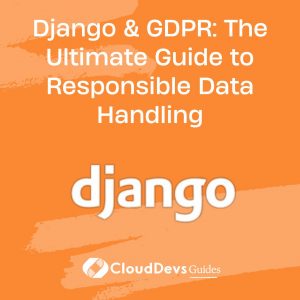Django & GDPR: The Ultimate Guide to Responsible Data Handling
The digital era has brought data privacy and protection to the forefront of business and technology discussions. The European Union’s General Data Protection Regulation (GDPR) has set a benchmark in data privacy laws, imposing strict guidelines on data handling. This article explores how Django, a high-level Python web framework, supports GDPR compliance. Django’s versatile and secure framework simplifies the compliance process for developers, making it an ideal choice for building GDPR-compliant web applications. You can hire Django Developers for your projects to ensure greater success.
Table of Contents
1. What is GDPR?
The GDPR, effective from May 25, 2018, aims to give individuals control over their personal data and to unify data privacy laws across Europe. It imposes strict rules on data processing and movement, impacting organizations worldwide. Key principles include consent, right to access, data portability, and strict data processing guidelines. Non-compliance can result in hefty fines. The regulation’s global impact requires businesses to rethink their data strategies, especially when using web technologies like Django.
2. Django and Data Protection
Django, renowned for its “batteries-included” approach, provides a robust suite of tools facilitating secure and efficient web development. Its ORM, forms, and authentication system offer a solid foundation for implementing GDPR’s data protection requirements. This section will delve into how Django’s features can be leveraged for GDPR compliance.
Read more: Django’s security features.
2.1. Data Minimization
The GDPR emphasizes the principle of data minimization: only collect data that is strictly necessary. Django’s forms and model fields can be tailored to gather only essential information. For example, a user registration form in Django can be designed to request minimal user information, thereby adhering to this principle. Best practices in implementing data minimization in Django models and forms, along with real-world examples, will be explored.
Read more: Django forms.
2.2. Consent Management
Under GDPR, explicit consent is required for data processing. Django applications can manage this by incorporating consent checkboxes in forms, clearly explaining data usage. This section will guide through creating GDPR-compliant consent forms in Django, including handling and storing consent records securely.
Read more: Guide to consent management.
2.3. Data Subject Rights
GDPR grants individuals rights over their data, such as access, rectification, and deletion. Django developers can facilitate these rights by creating views and URLs that allow users to view, modify, or delete their data. Practical examples, such as building a user profile page with options for data download or account deletion, will be presented.
Read more: Understanding data subject rights.
2.4. Data Security
Ensuring the security of personal data is a critical aspect of GDPR. Django offers various security features, like middleware for secure cookies and HTTPS redirection. This section will discuss implementing these features to protect data in transit and at rest, including best practices for secure Django deployment.
Read more: Secure data transmission guidelines.
2.5. Data Breach Protocol
GDPR mandates strict data breach notification protocols. Django applications should have mechanisms to detect and report breaches. This segment will cover developing an internal breach notification system within Django, including real-time alerts and logging mechanisms.
Read more: Data breach response planning.
3. Case Study: A Django Project
A practical case study will be presented, detailing a Django project’s journey to GDPR compliance. This case study will cover the steps taken to align with GDPR requirements, the challenges faced, and the solutions implemented. It will serve as a real-world example of how Django can be effectively used to meet GDPR compliance.
Conclusion
Achieving GDPR compliance with Django is a proactive and continuous process. By understanding and utilizing Django’s features, developers can build web applications that not only respect user privacy but also align with the highest standards of data security.
You can check out our other blog posts to learn more about Django. We bring you a complete guide titled Django Unleashed: Harnessing the Full Potential of the Framework along with the Django Templates: Creating Dynamic and Responsive Web Pages and Django Testing: Ensuring Quality and Reliability in Yoclouddevs.com/django/testing-your-codeur Codebase which will help you understand and gain more insight into the Django programming language.
Table of Contents







